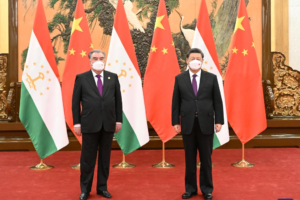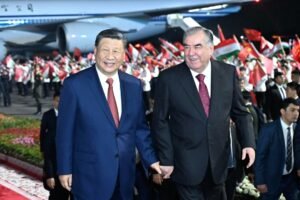With the absence of Xi Jinping at last week’s G20 summit in New Delhi, one of the last hopes of reaching a breakthrough between Prime Minister Narendra Modi and his China counterpart Xi Jinping has been dashed. India–China bilateral relations are in a state of deep freeze since the Galwan clash of June 2020 and this begs a fundamental question: Was Galwan just another standoff at the line of actual control (LAC) or a turning point in the state of relationship?
The India China relationship since the 1970s has followed a recurring theme of cooperation and competition with one of the elements being the defining feature at a time. However the significance of the Galwan incident lies in the fact that it’s the first case of violence after the signing of the 1993 Border Peace and Tranquility Agreement (BPAT).
It indicates that existing institutional mechanisms are proving incapable of managing the relationship; the non-resolution of conflict even after three years shows a lack of political appetite on both sides to make a concession. China’s insistence to put the “border question” in a proper place in the larger framework of bilateral relations, and India’s counter-position of the relationship being “abnormal” until resolution of the border standoff, points to a completely divergent perception on both sides on how to take the relationship forward. This divergence is not the result of the individual judgment of leaders on both sides but precipitated by several structural factors.
One of the lenses to understand the Sino-Indian relationship is through the triangle of the US-India–China framework. China‘s principal concern during the Cold War era was to ensure Indian neutrality in its great power competition with the US and USSR. After the demise of the Soviet Union in 1991 and the beginning of the unipolar moment, China‘s principal objective was to secure its periphery to blunt any possible US moves to instigate regime change in China. This prompted China to engage India through the 1993 BPAT.
Now that the US unipolar moment has passed and China herself has emerged as a pole in a direct confrontation with the US for global hegemony, its policy goal has changed from securing its periphery to expanding its influence. This is illustrated by China‘s increasingly hostile posture in its territorial disputes with its neighbours, be it Philippines, Vietnam or India.
However, the Sino-Indian case is unique due to India’s stated objective of multipolarity. And given the size of its territory, population and economy, India has the unique ability to act as a swing state in Sino-US competition. The core problem which has stymied the Sino-India relationship is Bejing’s inability to view India as an independent actor. The patronising rhetoric coming out from China since the 2017 Doklam incident reflects China‘s continuing view of India as a piece in the global chessboard rather than as a player with whom it can meaningfully engage.
This has created a rather paradoxical situation where India feels it has to align more closely with the United States in order to bolster its bargaining position vis-a-vis China. In turn, this closer alignment is viewed by China as the validation of its perception that India is not an autonomous player. India‘s policy of “strategic autonomy” means it is averse to forming any treaty relation with the US – unlike Japan or South Korea. However, given its rapidly deteriorating relations with China, closer engagement with the United States is the “hedge” which India is pursuing.
India has invested its geo-political capital in transforming the “QUAD” from a loose acronym to a “summit level” institution. In the maritime domain, India has put the “Indo-Pacific” construct at the centre-piece of its Indian Ocean strategy. Although Prime Minister Narendra Modi has specifically called the “Indo-Pacific” a geographical construct, China views the ‘free and open Indo-Pacific’ as another US instigated attempt to contain China in the Indian Ocean by exploiting its vulnerabilities along choke points like the Strait of Malacca.
This Indian strategy of “hedging” has its own pitfalls in case a modus vivendi is reached between China and the United States as a “G-2” of both economic giants managing global affairs together. President Xi proposed the G2 concept to Barack Obama when he was US president but that proposal did not get very far. If revived, however, the US commitment towards India may dwindle. On its part, China is also making a risky bet by keeping the LAC hot – given that it may face its own “two front” situation with the volatile situation in both Taiwan strait and the Himalayas.
Given the dire consequences of the protracted Russia-Ukraine conflict, the world, especially the global south, cannot afford another theatre of war in Asia. This requires not just a softening of China‘s belligerent posture but also a willingness to engage in dialogue with its neighbors in a constructive manner. China‘s own position carries an inherent contradiction where it presents its territorial integrity as “non-negotiable” and expects other countries to view Chinese encroachments on their borders in a “proper perspective”. This patronizing attitude can be seen in China‘s territorial dispute with India and its dispute in the South China Sea.
India’s China policy has its own shortcomings. For example, despite much rhetoric, the trade deficit with China is ballooning. Knee-jerk reactions like banning Tik-Tok should be substituted by structural reforms to ensure a balance in economic ties.
Despite many divergences, India and China have much more in common. For example, both have quite similar positions in climate negotiations, IMF reforms etc. During the Wuhan and Mahabalipuram summits, both Prime Minister Modi and President Xi talked about the importance of “strategic communication” to make sure that “differences don’t become disputes”. This approach needs to be implemented since the world is big enough to accommodate the aspirations of both China and India.
Source : TheWire











